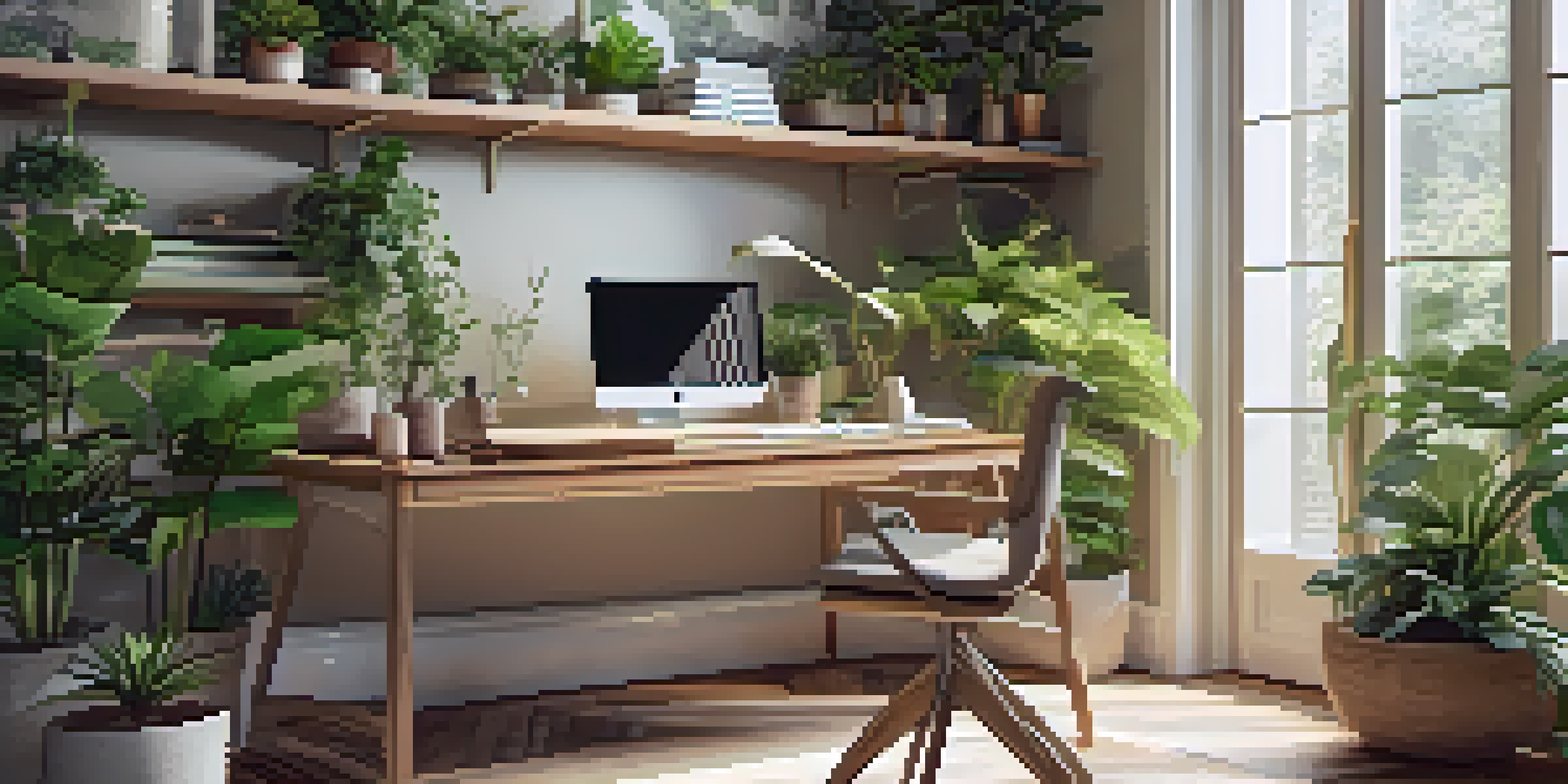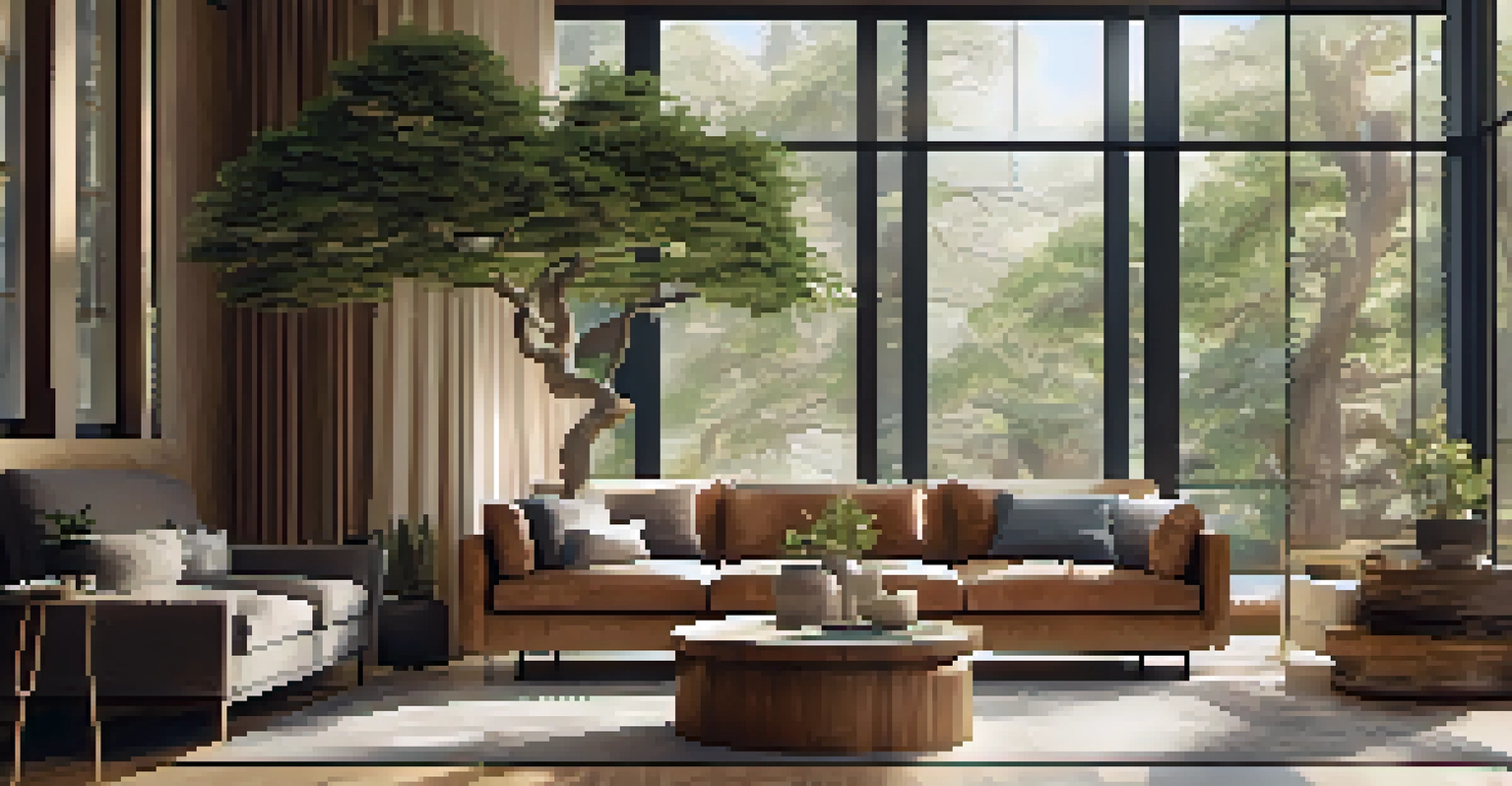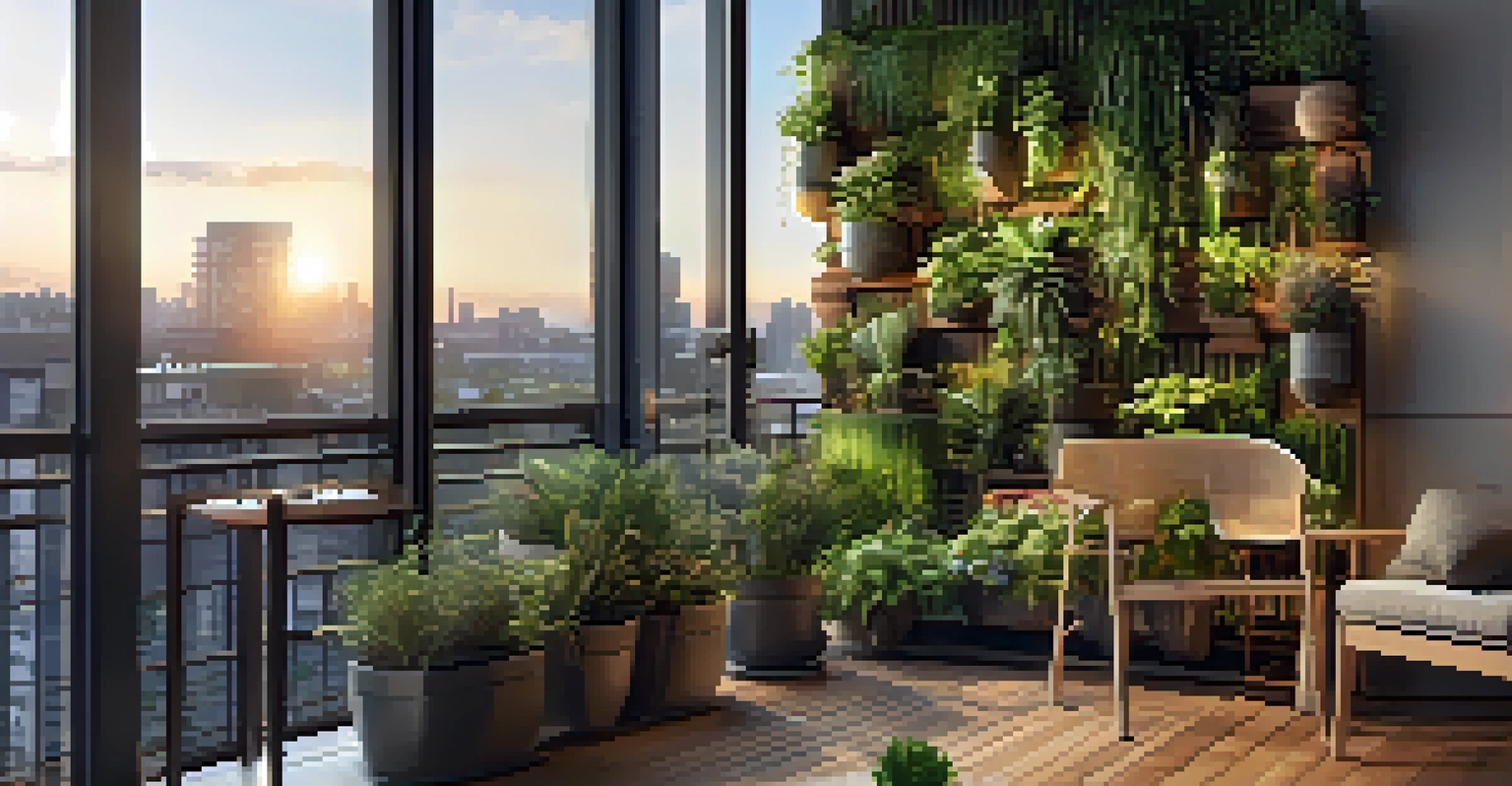The Rise of Biophilic Design in Modern Interiors

What is Biophilic Design? An Introduction to the Concept
Biophilic design is all about connecting people with nature in their living spaces. It’s a concept that finds its roots in the idea that humans have an innate desire to be close to nature. The term 'biophilia' was popularized by biologist Edward O. Wilson in the 1980s, emphasizing our instinctive bond with the natural world. In modern interiors, this translates into designs that incorporate natural elements, such as plants, water features, and natural light.
Nature does not hurry, yet everything is accomplished.
Imagine walking into a room filled with sunlight pouring through large windows, plants cascading from shelves, and the soothing sound of a small fountain. That’s the essence of biophilic design—it creates environments that evoke feelings of comfort and tranquility. The goal is to create spaces that not only look beautiful but also enhance our well-being and productivity.
By integrating biophilic elements, designers aim to reduce stress and improve overall mental health. This approach has gained traction in recent years, driven by a growing awareness of the need for sustainable living and the benefits of interacting with nature. It's a trend that’s reshaping how we think about our homes and workplaces.
The Benefits of Biophilic Design in Our Living Spaces
One of the most compelling reasons for the rise of biophilic design is the multitude of benefits it offers. Studies have shown that incorporating natural elements can lower stress levels, boost mood, and even enhance cognitive function. For instance, a workspace filled with plants and natural light can lead to increased focus and creativity, making it a win-win for both employees and employers.

Additionally, biophilic design promotes physical health. Natural light can help regulate our circadian rhythms, improving sleep quality, while plants can purify the air and enhance indoor air quality. This means that by simply introducing more natural elements into our interiors, we can create healthier spaces for ourselves and our loved ones.
Biophilic Design Connects Us to Nature
Biophilic design emphasizes our innate desire to connect with nature, enhancing well-being through natural elements in our spaces.
Imagine a home office where you're surrounded by greenery, allowing you to feel more energized and less fatigued. This is the power of biophilic design—it transforms ordinary spaces into sanctuaries that nurture both body and mind. As more people seek out these benefits, the demand for biophilic design continues to rise.
Key Elements of Biophilic Design You Can Incorporate
Incorporating biophilic design into your home doesn’t have to be overwhelming. There are several key elements you can easily introduce to create a more nature-inspired interior. Start with plants—whether it's a large potted tree or small succulents, greenery adds life and vibrancy to any space. Consider using materials like wood, stone, or bamboo to further enhance the natural feel of your environment.
The clearest way into the Universe is through a forest wilderness.
Natural light is another crucial element. If possible, maximize window space or use light-colored curtains that allow for ample sunlight to filter through. Mirrors can also help reflect light, making the space feel brighter and more open. Additionally, using water features, like indoor fountains or aquariums, can introduce soothing sounds and create a calming atmosphere.
Remember to think about color palettes as well. Earthy tones, such as greens, browns, and soft blues, can mimic the colors found in nature, creating a cohesive and serene environment. By thoughtfully integrating these elements, you can cultivate a home that feels both inviting and rejuvenating.
Biophilic Design Trends Shaping the Future of Interiors
As we look to the future, several exciting trends in biophilic design are emerging. One such trend is the use of vertical gardens, which allow urban dwellers to bring greenery into limited spaces. These living walls not only beautify interiors but also improve air quality and create a sense of tranquility amidst the hustle and bustle of city life.
Another trend is the integration of natural materials and textures into design. From reclaimed wood floors to stone countertops, these elements evoke a connection to the outdoors. Interior designers are increasingly opting for sustainable and eco-friendly materials that reflect a commitment to the environment, further aligning with the principles of biophilic design.
Health Benefits of Natural Elements
Incorporating biophilic design can lower stress, improve mood, and enhance cognitive function, promoting overall physical and mental health.
Additionally, technology is playing a role in biophilic design. Smart home systems can control natural light and temperature, creating environments that mimic outdoor conditions. This blend of technology and nature not only enhances comfort but also fosters a deeper connection to our surroundings. As these trends evolve, biophilic design will continue to influence modern interiors.
Case Studies: Successful Biophilic Design Implementations
Looking at real-world examples can provide inspiration for anyone interested in biophilic design. Take the Bosco Verticale (Vertical Forest) in Milan, for instance—this residential building features balconies adorned with over 9,000 trees, creating a lush, green facade that supports biodiversity while promoting residents' well-being. It’s a stunning example of how integrating nature into architecture can transform urban living.
Similarly, the Eden Project in the UK showcases how biophilic design can create immersive environments. This impressive structure houses multiple biomes filled with plants from around the world, offering visitors a unique experience that fosters a deeper appreciation for nature. It serves not only as an educational hub but also as an inspiring model for eco-friendly design.
These case studies highlight the potential of biophilic design to reshape our environments. By learning from such innovative projects, homeowners and designers alike can envision how to incorporate nature into their spaces effectively, creating a harmonious balance between the built and natural worlds.
Challenges and Considerations in Biophilic Design
While biophilic design offers many advantages, there are also challenges to consider. One common issue is the maintenance of plants and natural elements. Not everyone has a green thumb, and some may find it difficult to keep indoor plants healthy. It’s essential to choose low-maintenance options or consult with a professional to ensure your biophilic elements thrive without added stress.
Another consideration is space limitations. In urban environments, where square footage can be limited, finding ways to incorporate biophilic design can be tricky. However, even small changes, like adding a few potted plants or utilizing vertical gardening techniques, can still make a significant impact.
Trends Shaping Biophilic Interiors
Emerging trends such as vertical gardens and eco-friendly materials are transforming interiors to better integrate nature into our living environments.
Finally, budget can be a constraint. While some biophilic elements can be affordable, others may require a larger investment. It’s vital to prioritize what matters most to you and find creative solutions that align with your budget. By addressing these challenges, you can create a biophilic space that truly resonates with your lifestyle.
The Future of Living: Embracing Biophilic Design
As we move forward, the importance of biophilic design in our living environments will only continue to grow. With increasing urbanization and the ongoing impact of climate change, creating spaces that prioritize our connection to nature is essential for our well-being. Biophilic design not only enhances aesthetics but also fosters a healthier lifestyle and a deeper appreciation for the natural world.
More designers and architects are recognizing the benefits of integrating nature into their work, paving the way for innovative approaches to interior design. This shift is not just a trend; it’s a fundamental change in how we perceive and interact with our surroundings. The future of living is about harmonizing our interiors with the natural environment.

Ultimately, embracing biophilic design is a journey towards creating spaces that nurture us. Whether through simple changes in our homes or larger architectural projects, the goal remains the same: to cultivate a connection with nature that enriches our lives. As we embark on this journey, we’ll find that the more we bring nature indoors, the more we thrive.